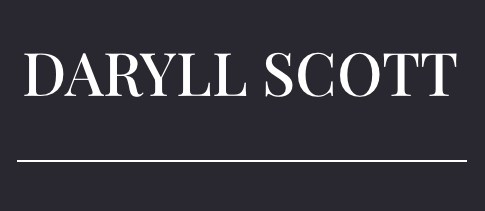Are You a Bottom-Up or Top-Down Thinker?
Exploring the tension between discovery and data

There are two equally valid but distinctly different types of reasoning that can be applied to understanding a system you work in:
- Inductive reasoning (bottom-up logic)
- Deductive reasoning (top-down logic)
These two different ways of thinking provide valuable insight, but they are both subject to unhelpful biases.
Deductive, top-down thinking begins at the top with systemic data and then makes assumptions to work out what’s going on in reality.
Inductive, bottom-up thinking begins with observations of concrete reality and extrapolates those observations to imagine what’s going on at a system level.
It’s a bit like the difference between two fictional characters; deductive Private Investigator Sherlock Holmes and inductive Time Lord Doctor Who:
Sherlock often says, “If you remove the impossible, whatever is left, no matter how improbable, must be the truth.” He arrives at a crime scene after the event has already happened, so he cannot observe the actual event. He, therefore, applies deduction to sift through the details and clues that may or may not be relevant. He makes an assumption, explores it until it reaches a dead-end, then abandons it and begins to explore another assumption instead.
On the other hand, Doctor Who cluelessly and spontaneously immerses himself in the live-action to observe and understand what’s happening in reality. For example, if he is fighting his nemesis ‘the Daleks’ he tends to make a specific observation about an individual Dalek and then extrapolate that discovery out to defeat the entire Dalek army.
In everyday organisational activities we see both types of observation & enquiry:
Top-down thinkers would survey their people/customers and then think of ways to influence the visible trends in the data. Bottom-up thinkers would enter the workplace, observe conditions and talk to people.
Top-down thinkers would analyse data to decide how a retail unit is performing and which products are successful. Bottom-up thinkers would mystery shop the customer experience or ask customers naive, open questions.
Typically, creative agencies think bottom-up, empathising with the customer and engaging their imagination to design for that customer. This is the basis of design thinking. Management Consultants with MBAs think top-down, looking at the data from the whole population first and making assumptions often without concrete observation.
This difference may be a product of your professional discipline, but as a natural thought process it's psychological and neuroscientific. Bottom-up thinking happens when we pay attention to sensory information and then think about it, whereas top-down happens when we are more goal-oriented and think first before looking for sensory examples.
Taiichi Ohno, an executive at Toyota, led the development of the concept of the 'Gemba Walk' in business. 'Gemba' is a Japanese term meaning 'the actual place'. The ethos behind 'Gemba Walking' is that problems that perplex people in meeting rooms are often clearly visible, and improvements or new ideas are easier to find if you go to the actual place where the activity happens. The objective of a 'Gemba walk' is to observe and understand waste, safety, conditions, standards, status and relationships rather than simply review results on spreadsheets and make superficial judgements.
Most of us are conditioned to think deductively like Sherlock. It’s a robust way of thinking, especially if the subject you are exploring is unobservable, but it’s also reductive. It’s a filtering process of top-down logic that is only as good as the data you have - and the data is only as good as the questions you asked. Deductive thinking is critical. When we think deductively, we attempt to improve things by critiquing and removing the negatives, but there’s a big difference between making something good and making something less rubbish. Deductive thinking may filter away the errors, but it rarely adds anything new.
The challenge when working in large organisations or institutions is that we need to work in a world of statistical evidence and deductive logic to be credible, yet we need to observe and understand the messy and organic reality to be effective.
Sadly, inductive reasoning is often dismissed as being merely anecdotal and not statistically or scientifically robust. It’s true that inductive reasoning starts from small observations and opens the door to several cognitive biases, from overestimating the significance of small samples of data to confirmation bias which will lead you to find evidence for what you believe as you extrapolate the observation - but inductive reasoning is the only way to be imaginative, creative, pragmatic and based on actual reality.
When we think deductively, we fall into two problems:
- We could be missing the point entirely because we don't have any data which points to the real issue
- We could fall into the trap of making future decisions based exclusively on retrospective data
Past data does not tell us about next year, and no data is as rich as observation, but without any data we are shooting in the dark.
Conclusion
If we are not utilising both data and observation, we are not playing with a full deck. We need both sources of insight to think properly. References
Bodek, N. (2004). Kaikaku: The power and magic of lean: a study in knowledge transfer
. PCS Inc.
Nickerson, R. S. (1998). Confirmation bias: A ubiquitous phenomenon in many guises. Review of General Psychology, 2(2), 175-220.
Palmer, F. R. (1981). Semantics
. Cambridge university press.
Taleb, N. N. (1999). The Black Swan: The Impact of the Highly Improbable, New York 2007










